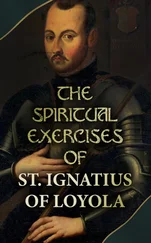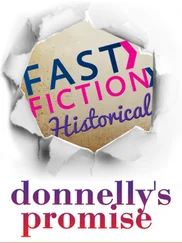Ignatius Donnelly - Antediluvian world
Здесь есть возможность читать онлайн «Ignatius Donnelly - Antediluvian world» весь текст электронной книги совершенно бесплатно (целиком полную версию без сокращений). В некоторых случаях можно слушать аудио, скачать через торрент в формате fb2 и присутствует краткое содержание. Жанр: Старинная литература, на русском языке. Описание произведения, (предисловие) а так же отзывы посетителей доступны на портале библиотеки ЛибКат.
- Название:Antediluvian world
- Автор:
- Жанр:
- Год:неизвестен
- ISBN:нет данных
- Рейтинг книги:5 / 5. Голосов: 1
-
Избранное:Добавить в избранное
- Отзывы:
-
Ваша оценка:
- 100
- 1
- 2
- 3
- 4
- 5
Antediluvian world: краткое содержание, описание и аннотация
Предлагаем к чтению аннотацию, описание, краткое содержание или предисловие (зависит от того, что написал сам автор книги «Antediluvian world»). Если вы не нашли необходимую информацию о книге — напишите в комментариях, мы постараемся отыскать её.
Antediluvian world — читать онлайн бесплатно полную книгу (весь текст) целиком
Ниже представлен текст книги, разбитый по страницам. Система сохранения места последней прочитанной страницы, позволяет с удобством читать онлайн бесплатно книгу «Antediluvian world», без необходимости каждый раз заново искать на чём Вы остановились. Поставьте закладку, и сможете в любой момент перейти на страницу, на которой закончили чтение.
Интервал:
Закладка:
6. Without Atlantis, how can we explain the fact that the early Egyptians were depicted by themselves as red men on their own monuments?
And, on the other hand, how can we account for the representations of negroes on the monuments of Central America?
Desire Charnay, now engaged in exploring those monuments, has published in the North American Review for December, 1880, photographs of a number of idols exhumed at San Juan de Teotihuacan, from which I select the following strikingly negroid faces:
NEGRO
IDOLS
FOUND
IN
MEXICO
.
Dr. Le Plongeon says:
“Besides the sculptures of long-bearded men seen by the explorer at Chichen Itza, there were tall figures of people with small heads, thick lips, and curly short hair or wool, regarded as negroes. ‘We always see them as standard or parasol bearers, but never engaged in actual warfare.’” (“Maya Archaeology,” p. 62.) The following cut is from the court of the Palace of Palenque, figured by Stephens. The face is strongly Ethiopian.
The figure below represents a gigantic granite head, found near the volcano of Tuxtla, in the Mexican State of Vera Cruz, at Caxapa. The features are unmistakably negroid.
As the negroes have never been a sea-going race, the presence of these faces among the antiquities of Central America proves one of two things, either the existence of a land connection between America and Africa via Atlantis, as revealed by the deep-sea soundings of the Challenger, or commercial relations between America and Africa through the ships of the Atlanteans or some other civilized race, whereby the negroes were brought to America as slaves at a very remote epoch.
And we find some corroboration of the latter theory in that singular book of the Quiches, the “Popol Vuh,” in which, after describing the creation of the first men “in the region of the rising sun” (Bancroft’s “Native Races,” vol. v., p. 548), and enumerating their first generations, we are told, “All seem to have spoken one language, and to have lived in great peace, black men and white together. Here they awaited the rising of the sun, and prayed to the Heart of Heaven.”
(Bancroft’s “Native Races,” p. 547.) How did the red men of Central America know anything about “black men and white men?” The conclusion seems inevitable that these legends of a primitive, peaceful, and happy land, an Aztlan in the East, inhabited by black and white men, to which all the civilized nations of America traced their origin, could only refer to Atlantis—that bridge of land where the white, dark, and red races met. The “Popol Vuh” proceeds to tell how this first home of the race became over-populous, and how the people under Balam-Quitze migrated; how their language became “confounded,” in other words, broken up into dialects, in consequence of separation; and how some of the people “went to the East, and many came hither to Guatemala.” (Ibid., p.
547.)
M. A. de Quatrefages (“Human Species,” p. 200) says, “Black populations have been found in America in very small numbers only, as isolated tribes in the midst of very different populations. Such are the Charruas, of Brazil, the Black Carribees of Saint Vincent, in the Gulf of Mexico; the Jamassi of Florida, and the dark-complexioned Californians. . . . Such, again, is the tribe that Balboa saw some representatives of in his passage of the Isthmus of Darien in 1513; . .
. they were true negroes.”
7. How comes it that all the civilizations of the Old World radiate from the shores of the Mediterranean? The Mediterranean is a cul de sac, with Atlantis opposite its mouth. Every civilization on its shores possesses traditions that point to Atlantis. We hear of no civilization coming to the Mediterranean from Asia, Africa, or Europe—from north, south, or west; but north, south, east, and west we find civilization radiating from the Mediterranean to other lands. We see the Aryans descending upon Hindostan from the direction of the Mediterranean; and we find the Chinese borrowing inventions from Hindostan, and claiming descent from a region not far from the Mediterranean.
The Mediterranean has been the centre of the modern world, because it lay in the path of the extension of an older civilization, whose ships colonized its shores, as they did also the shores .of America. Plato says, “the nations are gathered around the shores of the Mediterranean like frogs around a marsh.”
Dr. McCausland says:
“The obvious conclusion from these facts is, that at some time previous to these migrations a people speaking a language of a superior and complicated structure broke up their society, and, under some strong impulse, poured out in different directions, and gradually established themselves in all the lands now inhabited by the Caucasian race. Their territories extend from the Atlantic to the Ganges, and from Iceland to Ceylon, and are bordered on the north and east by the Asiatic Mongols, and on the south by the negro tribes of Central Africa. They present all the appearances of a later race, expanding itself between and into the territories of two pre-existing neighboring races, and forcibly appropriating the room required for its increasing population.”
(McCausland’s “Adam and the Adamites,” p. 280.) Modern civilization is Atlantean. Without the thousands of years of development which were had in Atlantis modern civilization could not have existed. The inventive faculty of the present age is taking up the great delegated work of creation where Atlantis left it thousands of years ago.
8. How are we to explain the existence of the Semitic race in Europe without Atlantis? It is an intrusive race; a race colonized on sea-coasts. Where are its Old World affinities?
9. Why is it that the origin of wheat, barley, oats, maize, and rye—the essential plants of civilization—is totally lost in the mists of a vast antiquity? We have in the Greek mythology legends of the introduction of most of these by Atlantean kings or gods into Europe; but no European nation claims to have discovered or developed them, and it has been impossible to trace them to their wild originals. Out of the whole flora of the world mankind in the last seven thousand years has not developed a single food-plant to compare in importance to the human family with these. If a wise and scientific nation should propose nowadays to add to this list, it would have to form great botanical gardens, and, by systematic and long-continued experiments, develop useful plants from the humble productions of the field and forest. Was this done in the past on the island of Atlantis?
10. Why is it that we find in Ptolemy’s “Geography of Asia Minor,” in a list of cities in Armenia Major in A.D. 140, the names of five cities which have their counterparts in the names of localities in Central America?
------------------------------+ | Armenian Cities. | Central American Localities. |
------------------------------+ | Chol. | Chol-ula |
------------------------------+ | Colua. | Colua-can. |
------------------------------+ | Zuivana. | Zuivan. |
------------------------------+ | Cholima. | Colima. |
------------------------------+ | Zalissa. | Xalisco. |
------------------------------+
(Short’s “North Americans of Antiquity,” p. 497.) 11. How comes it that the sandals upon the feet of the statue of Chacmol, discovered at Chichen Itza, are “exact representations of those found on the feet of the Guanches, the early inhabitants of the Canary Islands, whose mummies are occasionally discovered in the eaves of Teneriffe?” Dr. Merritt deems the axe or chisel heads dug up at Chiriqui, Central America, “almost identical in form as well as material with specimens found in Suffolk County, England.” (Bancroft’s Native Races,” vol. iv., p. 20.) The rock-carvings of Chiriqui are pronounced by Mr. Seemann to have a striking resemblance to the ancient incised characters found on the rocks of Northumberland, England. (Ibid.) “Some stones have recently been discovered in Hierro and Las Palmas (Canary Islands), bearing sculptured symbols similar to those found on the shores of Lake Superior; and this has led M. Bertholet, the historiographer of the Canary Islands, to conclude that the first inhabitants of the Canaries and those of the great West were one in race.” (Benjamin, “The Atlantic Islands,” p. 130.) 12. How comes it that that very high authority, Professor Retzius (“Smithsonian Report,” 1859, p. 266), declares, “With regard to the primitive dolichocephalae of America I entertain a hypothesis still more bold, namely, that they are nearly related to the Guanches in the Canary Islands, and to the Atlantic populations of Africa, the Moors, Tuaricks, Copts, etc., which Latham comprises under the name of Egyptian-Atlantidae. We find one and the same form of skull in the Canary Islands, in front of the African coast, and in the Carib Islands, on the opposite coast, which faces Africa. The color of the skin on both sides of the Atlantic is represented in these populations as being of a reddish-brown.”
Читать дальшеИнтервал:
Закладка:
Похожие книги на «Antediluvian world»
Представляем Вашему вниманию похожие книги на «Antediluvian world» списком для выбора. Мы отобрали схожую по названию и смыслу литературу в надежде предоставить читателям больше вариантов отыскать новые, интересные, ещё непрочитанные произведения.
Обсуждение, отзывы о книге «Antediluvian world» и просто собственные мнения читателей. Оставьте ваши комментарии, напишите, что Вы думаете о произведении, его смысле или главных героях. Укажите что конкретно понравилось, а что нет, и почему Вы так считаете.












